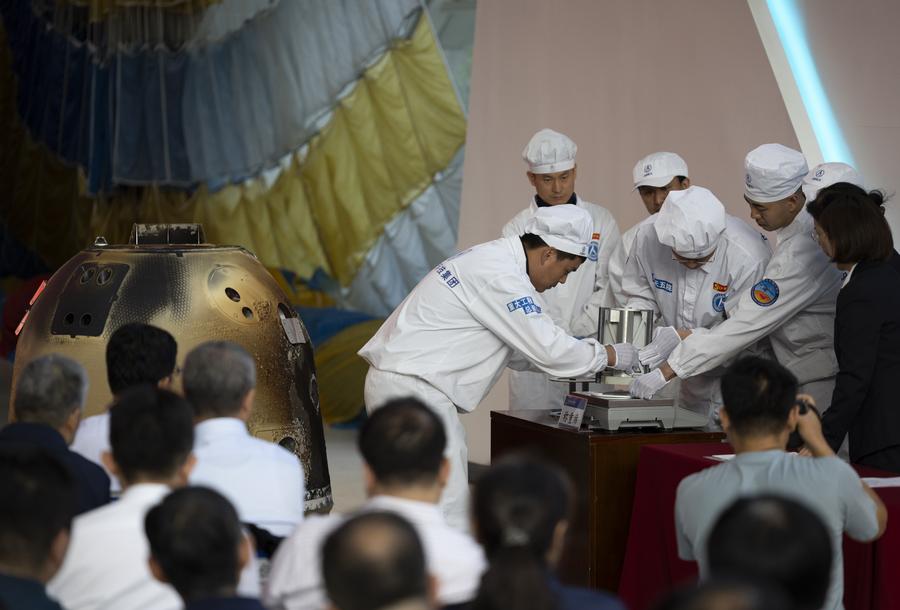Inventing the Future

There is a widespread consensus across different sectors in China to eliminate outdated thinking and institutional barriers to innovation.
The domain of science and technology is increasingly important to economic and social development, specifically since the advent of the Fourth Industrial Revolution, marked by advancements in artificial intelligence. Today, innovation in science and technology has become a driver of progress.
China has achieved remarkable feats in this domain, contributing to global advancements. Some of the country’s major innovations include the Tiangong space station, the Jiaolong manned submersible, the domestically developed C919 jetliner and the BeiDou Navigation Satellite System. These developments underline the country’s strong momentum in science and technology innovation, as well as its heightened innovative capabilities.
In several frontier fields of science and technology, China is now recognized as a global leader.
On June 25, the country’s Chang’e-6 lunar probe landed on the far side of the moon, bringing back the world’s first samples of moon dust and rocks from this previously uncharted area. This achievement made China the first country in the world to land on both sides of the moon and return with lunar samples.
The mission positioned China at the forefront of international lunar exploration efforts, contributing to our understanding of the moon and the broader universe.
The Chinese national flag that Chang’e-6 planted on the far side of the moon was made from a composite material derived from basalt found on China’s Taihang Mountains, which can also be used in different industrial applications such as compressed natural gas cylinders and pipelines, as well as in the construction industry.
The Chinese Government attaches great importance to science and technology. Since the 18th National Congress of the Communist Party of China (CPC) in 2012, the CPC Central Committee, under the leadership of General Secretary Xi Jinping, has highlighted the importance of innovation in science and technology. The focus on innovation is central to the vision for development that is innovative, coordinated, green, open and shared.
At the 20th CPC National Congress in 2022, the Party reiterated its commitment to science and technology as a primary productive force, vowing to accelerate efforts to achieve greater self-reliance and improved capabilities in this field.

Throughout 2023, the country’s expenditure in science and technology research and development totaled 3.33 trillion yuan ($467.04 billion), a year-on-year increase of 8.1 percent and accounting for 2.64 percent of GDP.
This investment will ultimately be converted into science and technology outputs, positively impacting economic and social development. In 2023, China saw the signing of 950,000 technology contracts, collectively valued at 6.15 trillion yuan ($862.55 billion), up 28.6 percent year on year.
China also places great emphasis on supporting scientists and nurturing an environment conducive to science and technology innovation. The report to the 20th CPC National Congress vowed to fully implement a workforce development strategy that values work, knowledge, talent and creativity. The report also promised more proactive, open and effective talent policies to create “an open and globally competitive innovation ecosystem.”
Currently, the country is advancing the development of new quality productive forces.
The concept of “new quality productive forces” refers to the shift toward a more innovative, technology-driven and sustainable economic model aimed at achieving higher productivity, competitiveness and long-term growth.
Continuous breakthroughs in basic research and applied innovation, especially in areas such as smart chips, quantum cryptography, controlled nuclear fusion, room-temperature superconductivity, satellite navigation, equipment manufacturing, aerospace and new materials, indicate the momentum of science and technology innovation in supporting the development of new quality productive forces.
Today’s world is experiencing great changes unseen in a century, and China is navigating complex shifts in both its domestic and international development environments. This context presents the urgent need to accelerate science and technology innovation. There is a widespread consensus across different sectors in China to eliminate outdated thinking and institutional barriers to innovation. The goal is to unleash and maximize the massive potential of science and technology as a primary productive force, ensuring self-reliance in scientific development and taking proactive steps in the country’s growth strategy.
 Facebook
Facebook
 Twitter
Twitter
 Linkedin
Linkedin
 Google +
Google +










